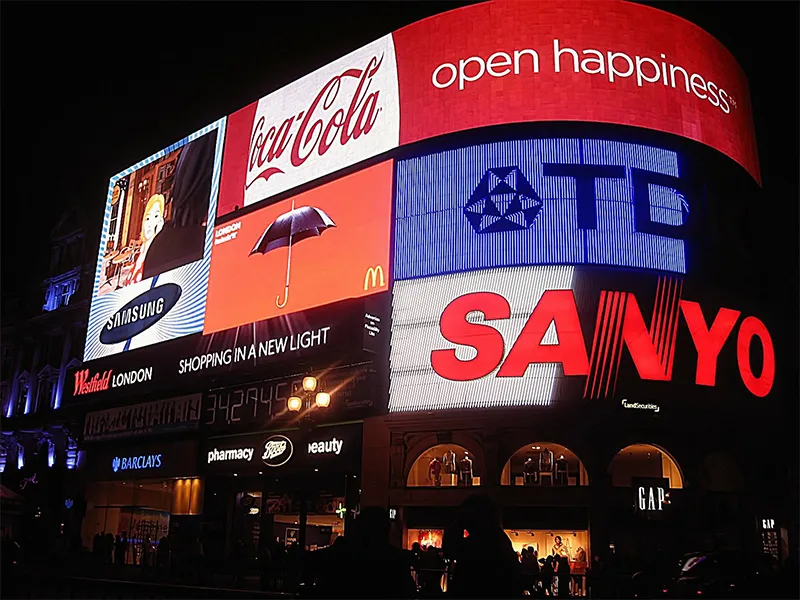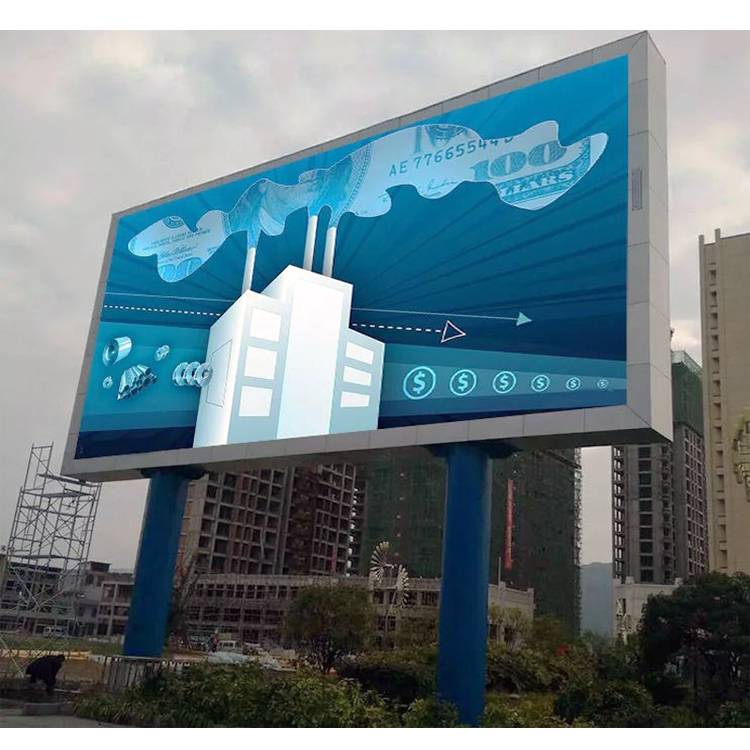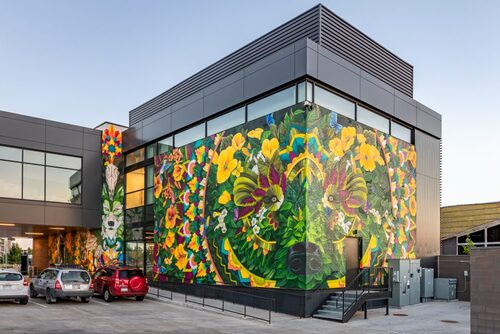
Outdoor LED displays can achieve high impact visual performance in any environment
In an increasingly digital and distraction-filled world, capturing public attention in outdoor spaces has become a greater challenge. From bustling city squares to stadiums and highways, outdoor LED displays have emerged as the go-to solution for delivering vivid, high-impact messages. Yet not all LED displays are created equal. The most effective systems combine engineering precision, advanced control technology, and environmental durability, enabling consistent performance in any condition. This article explores the key features, use cases, innovations, and deployment strategies that define successful outdoor LED display solutions.
What Defines a High-Performance Outdoor LED Display?
Outdoor LED displays face a variety of environmental challenges that indoor systems simply do not encounter. Strong sunlight, heavy rain, snow, wind, and temperature fluctuations all threaten the integrity and performance of outdoor installations. For that reason, outdoor LED displays require specialized design features to ensure long-term reliability.
One of the most essential attributes is brightness. Screens placed in direct sunlight need to achieve brightness levels of at least 6000 nits to remain visible. Alongside brightness, high contrast ratios enable sharper images and enhance visual clarity, even from long distances.
Additionally, durability is crucial. Protective casings rated IP65 or higher are necessary to guard against water, dust, and debris. These enclosures, typically made from corrosion-resistant aluminum or die-cast metal, help maintain internal stability regardless of weather conditions.
Efficient heat management is equally important. Whether through natural convection or fanless cooling structures, heat dissipation protects sensitive electronic components and extends lifespan. To reduce energy costs, many systems incorporate power-saving ICs and automatic brightness adjustment based on ambient light.

Application Scenarios and Customization Options
The versatility of outdoor LED displays allows them to serve multiple industries, each with distinct requirements. Digital billboards, stadium screens, transportation signage, and retail storefronts all rely on displays tailored to their environment and audience. The table below illustrates typical use cases and corresponding specifications:
Pixel pitch selection, viewing distance, content type, and site conditions all influence display configuration. As a result, manufacturers often provide custom-built solutions, including modular cabinets, customized enclosures, and flexible software platforms.
Advancements in Outdoor LED Display Technology
Technology continues to play a vital role in elevating the performance of outdoor LED displays. Rather than focusing solely on hardware improvements, recent innovations enhance user experience, improve energy efficiency, and streamline maintenance.
HDR technology, for instance, enriches image quality by deepening blacks and amplifying color accuracy. This is especially useful in public venues or roadside environments where ambient light levels vary throughout the day. Another key advancement is the integration of intelligent sensors. These built-in modules monitor internal temperature, voltage, and humidity, allowing operators to detect potential issues early and plan preventive maintenance before any visible failure occurs.
To support quieter environments such as plazas or museums, many outdoor LED displays now feature fanless designs that offer completely silent operation. Simultaneously, tool-free front and rear access systems simplify the replacement of LED modules or power units, minimizing downtime and labor costs.
Thanks to modularization, displays can be scaled and shaped to fit nearly any surface—from curved facades to stacked columns. This flexibility allows designers and architects to incorporate digital elements into public infrastructure without compromising aesthetics.

艺术2
Planning for Deployment and Long-Term Maintenance
Installing an outdoor LED display involves more than mounting a screen. Structural stability, wiring, ventilation, and service accessibility must all be considered during the planning phase. Failure to do so can lead to performance issues, increased energy costs, or safety hazards.
Mounting methods depend on location. Wall mounts are suitable for building facades, while steel poles or concrete footings support free-standing displays. Regardless of the structure, the support frame must account for wind resistance and allow for expansion due to temperature fluctuations.
Power and data management systems must be carefully designed to handle outdoor conditions. This includes waterproof cable routing, surge protection, and redundant power modules that prevent screen blackouts. Display systems with remote content management make it easier for operators to update messages, schedule playlists, and respond to emergencies—all without being physically on-site.
Ease of maintenance should also be factored in. Outdoor installations often require servicing under difficult conditions, so allowing easy access to all major components improves reliability and reduces service time. Some systems include cloud-based diagnostics, providing real-time alerts and usage data directly to a technician’s dashboard.
Environmental Adaptability and Design Considerations
The outdoor environment is unpredictable, and displays must function under a wide range of conditions without performance degradation. To that end, various environmental features must be accounted for during design and selection.
In coastal areas, salt and moisture pose a corrosion risk. Protective coatings and sealed modules prevent early deterioration. Similarly, in regions with sandstorms or heavy dust, displays require enhanced filters and air-sealed housings. For colder climates, integrated heating systems maintain consistent performance even in sub-zero temperatures. In contrast, desert conditions call for UV-resistant coatings and advanced heat dissipation technologies.
Design considerations extend beyond weather resistance. Anti-glare finishes reduce light pollution in urban settings, and adaptive brightness sensors ensure nighttime legibility without overwhelming the surroundings. Altogether, these features ensure that outdoor LED displays perform consistently—day or night, rain or shine.
Maximizing Communication Impact Across Industries
The value of outdoor LED displays lies not only in their ability to project vibrant images but also in their capacity to facilitate real-time, adaptable communication. Businesses and governments alike use these systems to convey vital information, increase visibility, and influence public behavior.
Retail brands use storefront LED screens to showcase new products, run flash sales, and engage passersby with interactive content. Transportation authorities deploy displays to broadcast arrival times, delays, and traffic conditions, significantly improving urban mobility. Stadiums and arenas rely on large-format screens to energize crowds, display scores, and deliver advertising during events.
Municipal governments also leverage outdoor LED displays for emergency broadcasts, public health updates, and event promotions. The ability to change content instantly makes these systems far more dynamic than traditional print signage, and their resilience allows for year-round use without interruption.

3D1
Conclusion
Outdoor LED displays represent a powerful convergence of engineering, digital design, and practical utility. Their ability to combine visibility, versatility, and visual brilliance has transformed them into essential tools for modern communication. More than just screens, they serve as interactive platforms that engage, inform, and inspire across various sectors.
Drawing on extensive experience in LED display manufacturing, Vision supports these applications by providing dependable, high-performance outdoor LED display solutions. With a commitment to quality, innovation, and customer satisfaction, the company helps clients around the world bring their messages to life—clearly, consistently, and with lasting visual impact.